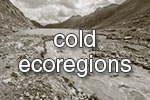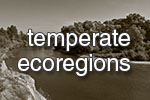- Overview
- Species affected by climate change
- Proposed indicators for climate change impacts
- Existing methodologies
- Adaption and mitigation
Rivers in warm ecoregions - Adaptation and mitigation
 Scores to specific
Scores to specific
climate pressure Climate change
Climate change
adaptation labelsClimate adaptation refers to the ability of a system to adjust to climate change (including climate variability and extremes) to moderate potential damage, to take advantage of opportunities, or to cope with the consequences. The IPCC defines adaptation as the “adjustment in natural or human systems to a new or changing environment. REFRESH project is focusing on five measures in specific:
- the management of riparian areas to control water temperature by the establishment of woody riparian vegetation along streams and rivers.
- the management of catchment hydrology to maintain flow in streams, water-level in lakes and regular flooding in wetlands.
- the re-creation of riparian floodplains to buffer against extreme precipitation events and changes in hydrodynamics, and to reduce nutrient flows and humic substances to water bodies.
- the management of catchment land-use to reduce diffuse nutrient loading and soil erosion.
- the management of water abstraction from, and effluent discharge to, surface waters.
One of the tasks of REFRESH is to review the effectiveness of adaptation and mitigation measures already being practiced in Europe at different scales: local, sub-catchment, catchment and European scales, specified per climate region (Atlantic, boreal, alpine, continental, and Mediterranean).
In this section a set of 15 adaptation strategies are listed for stream and rivers with a total of 58 adaptation measures, and arranged in searchable database.
For the full description of the methodology and results see:
REFRESH Deliverable 1.4 (pdf, 1mb).For more information see also:
REFRESH Deliverable 1.1 (pdf, 2.3mb) and REFRESH Deliverable 1.5 (pdf, 1mb).Select one or more strategies

You are here: / rivers / warm ecoregions / adaptation mitigation /








